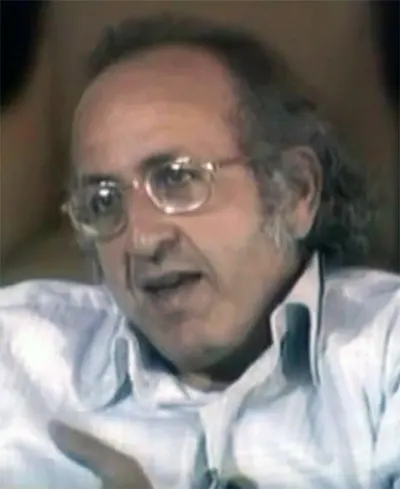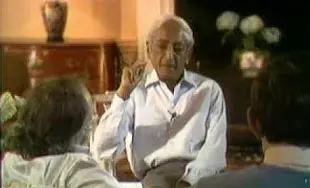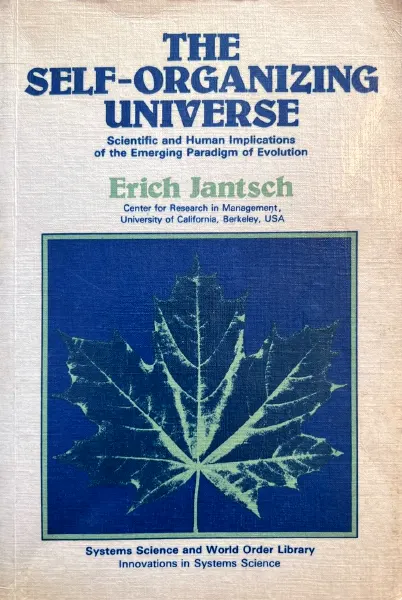The Library of Consciousness
of Consciousness

David Shainberg was primarily known as a renowned psychoanalyst and psychoanalytic author in New York City from the 1960s to the 80s. Born in Memphis, he graduated from the Columbia College of Physicians and Surgeons and trained as a psychoanalyst at the American Institute for Psychoanalysis. He became Dean of Education at the Postgraduate Center for Mental Health, NYC, and editor of the Psychoanalytic Journal. Among his many publications, David authored a book, The Transforming Self: New Dimensions in Psychoanalytic Process, (1973), a book that was precursor to his contributions in the fields of psychoanalysis and spirituality.
During his professional practice, he was also a leading force behind the integration of eastern and western philosophies in the understanding of consciousness and experience. The first to bring psychoanalysts and eastern spiritual leaders together, he collaborated with Jiddu Krishnamurti and David Bohm in videotaped discussions called “The Power of Illusion,” later published in the 1979 book, The Wholeness of Life.
Alphabetic
Date
Duration
Word Count
Popularity

Date
May 17, 1976
Format
Discussion
Word Count
7,795
Duration
01:00:43
Quotes
7
Views
1,144
This trialogue between Krishnamurti, Bohm, and Shainberg methodically uncovers the nature of man’s psyche, his fragmentation, the limitations of a thought-based society, and finds out if there is a wholeness, a sacredness in life which is untouched by thought.

Date
May 18, 1976
Format
Discussion
Duration
01:00:15
Views
488
This trialogue between Krishnamurti, Bohm, and Shainberg methodically uncovers the nature of man’s psyche, his fragmentation, the limitations of a thought-based society, and finds out if there is a wholeness, a sacredness in life which is untouched by thought.

Date
May 18, 1976
Format
Discussion
Duration
49:54
Views
244
This trialogue between Krishnamurti, Bohm, and Shainberg methodically uncovers the nature of man’s psyche, his fragmentation, the limitations of a thought-based society, and finds out if there is a wholeness, a sacredness in life which is untouched by thought.

Date
May 19, 1976
Format
Discussion
Duration
57:33
Views
243
This trialogue between Krishnamurti, Bohm, and Shainberg methodically uncovers the nature of man’s psyche, his fragmentation, the limitations of a thought-based society, and finds out if there is a wholeness, a sacredness in life which is untouched by thought.

Date
May 19, 1976
Format
Discussion
Duration
57:46
Views
253
This trialogue between Krishnamurti, Bohm, and Shainberg methodically uncovers the nature of man’s psyche, his fragmentation, the limitations of a thought-based society, and finds out if there is a wholeness, a sacredness in life which is untouched by thought.

Date
May 20, 1976
Format
Discussion
Duration
56:42
Views
236
This trialogue between Krishnamurti, Bohm, and Shainberg methodically uncovers the nature of man’s psyche, his fragmentation, the limitations of a thought-based society, and finds out if there is a wholeness, a sacredness in life which is untouched by thought.

Date
May 20, 1976
Format
Discussion
Duration
56:44
Views
316
This trialogue between Krishnamurti, Bohm, and Shainberg methodically uncovers the nature of man’s psyche, his fragmentation, the limitations of a thought-based society, and finds out if there is a wholeness, a sacredness in life which is untouched by thought.

Erich Jantsch
The Self-Organizing Universe
The evolution of the universe—ranging from cosmic and biological to sociocultural evolution—is viewed in terms of the unifying paradigm of self-organization. The contours of this paradigm emerge from the synthesis of a number of important concepts, and provide a scientific foundation to a new world-view which emphasizes process over structure, nonequilibrium over equilibrium, evolution over permanency, and individual creativity over collective stabilization. The book, with its emphasis on the interaction of microstructures with the entire biosphere, ecosystems etc., and on how micro- and macrocosmos mutually create the conditions for their further evolution, provides a comprehensive framework for a deeper understanding of human creativity in a time of transition.